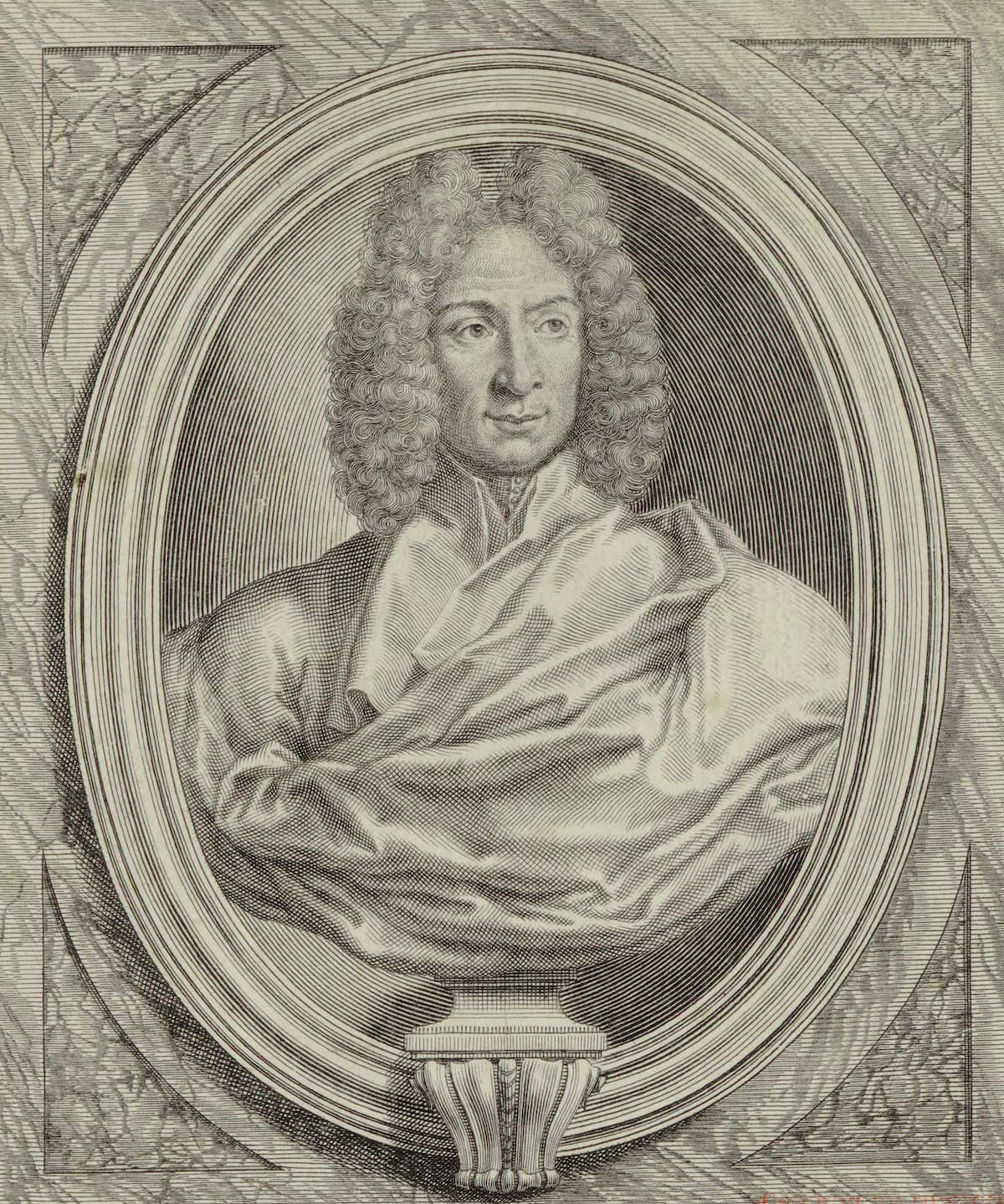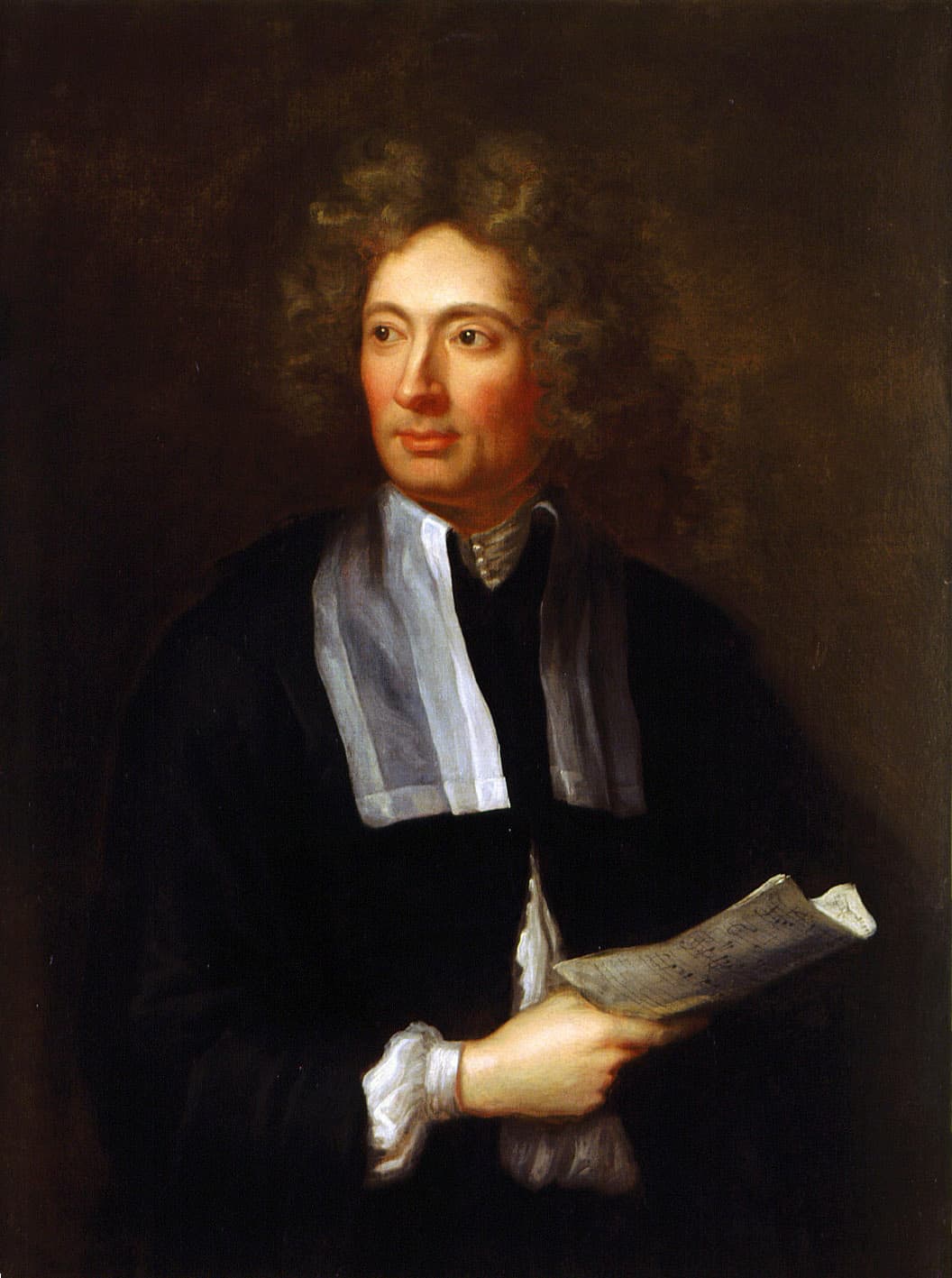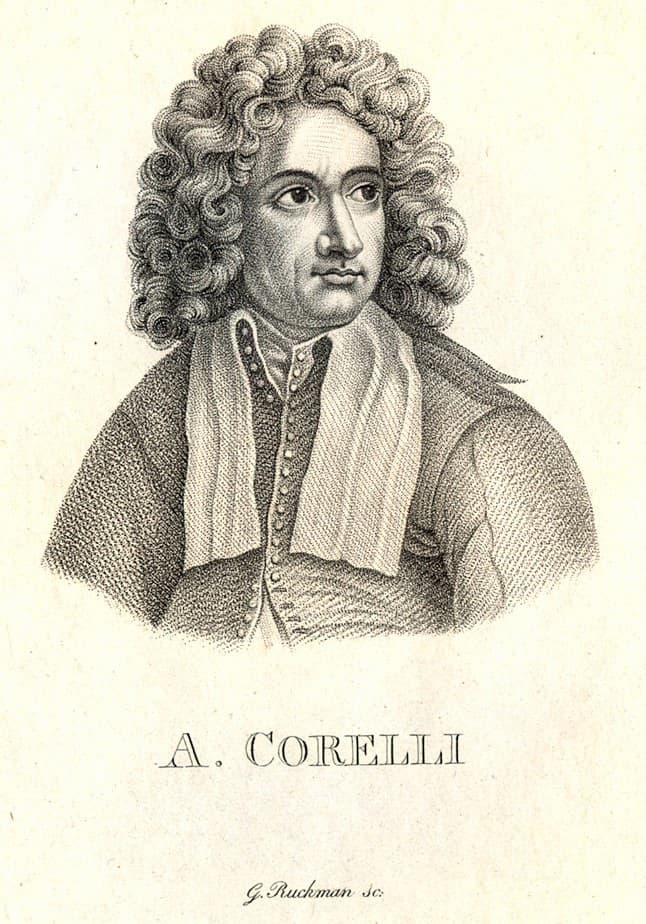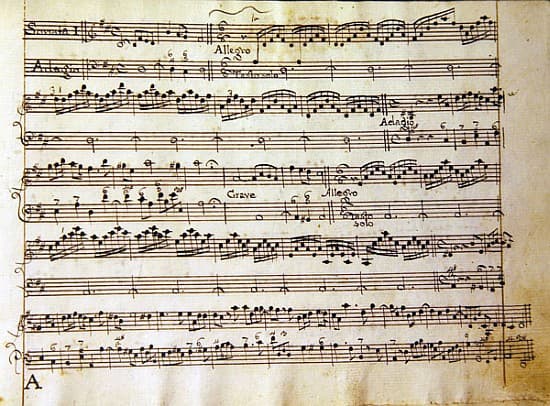The life of the exceptional Italian composer and violinist Arcangelo Corelli (1653-1713) is surrounded by a wealth of anecdotes and legends. Such tall tales are particularly plentiful when history is attempting to reconstruct the doings of discreetly homosexual composers.
Corelli kept largely silent and in the closet about his sexual orientation, and the public record was not overly concerned, happily expunging all references to “sodomy,” as it was then called. And when the first histories of music started to be written, other more important things needed to be said first. Assorted biographies dealing with Corelli generally yield a quick sentence or two, “Corelli was never married, and many people considered him homosexual.”
Arcangelo Corelli: Sonata for 2 Violins and Continuo, Op. 2, No. 2 in d minor
Baptismal Records

Arcangelo Corelli
At least a reliable baptismal record indicates that Arcangelo was born on 17 February 1653 in the small town of Fusignano, located between Bologna and Ravenna in the diocese of Ferrara. He came from a family of wealthy landowners, and of the fourteen churches in the territory of Fusignano, half were built at the expense of the Corelli family. Some members of the Corelli family entered religious orders; others became jurists, mathematicians, doctors, and poets.
The Corelli family certainly enjoyed an elevated social status, and it “undoubtedly contributed to the high regard in which the composer’s future patrons were to hold both him and his family.” As far as we know, Arcangelo, who was named after his father and who died a month before he was born, was the first musician in the family. Together with four older children, he was raised by his mother Santa Corelli, née Raffini.
Arcangelo Corelli: Trio Sonata in G Major, Op. 1, No. 9 (Nigel North, archlute; Micaela Comberti, violin; Simon Standage, violin; Anthony Pleeth, cello; Trevor Pinnock, organ)
Childhood to Bologna

Portrait of Arcangelo Corelli by Hugh Howard, 1697
Arcangelo’s childhood has been the subject of fanciful anecdotes and highly idealized childhood account constructed, embellished or invented after Corelli had achieved considerable notoriety. It is more or less agreed upon, however, that he took music lessons from a priest in the nearby town of Faenza, and it is assumed that the papal contralto Matteo Simonelli first taught him composition.
In 1666 Corelli went to Bologna and might have studied with the master violinists Leonardo Brugnoli, Giovanni Benvenuti, Bartolomeo Laurenti, and/or Giovanni Battista Bassani. We are certain, however, that he was admitted to Bologna’s prestigious Philharmonic Academy at the age of 17 and that his first published compositions are instrumental sonatas in several sections and movements in contrasting tempos and textures.
Arcangelo Corelli: Sonata for 2 Violins and Continuo, Op. 2, No. 12 “Ciacon”
Rome

Corelli might have spent only four years in Bologna, as his presence in Rome is only attested from 1675. His name appears as a violinist in an orchestra specially recruited for a series of Lenten oratorios. Corelli might well have arrived in Rome in 1671, but his whereabouts are uncertain. There exists an anecdotal account, probably originating with Jean-Jacque Rousseau, that Corelli had competed with the openly homosexual and flamboyant composer Jean-Baptiste Lully in Paris.
According to this fictional legend, Lully frightened Corelli away from Paris as he was “terribly envious of the young Italian’s good looks and talents.” Fanciful stories aside, Corelli published his first three sets of music in Rome in 1681, 1685, and 1689, respectively. His nickname, “Il Bolognese,” prominently features on the title pages of these publications.
Arcangelo Corelli: Sonata for 2 Violins and Continuo in F Major, Op. 2, No. 7 (Il Ruggiero; Emanuela Marcante, cond.)
Missing in Action

Corelli’s manuscript
Corelli seems to have gone missing again between the summer of 1679 and the spring of 1681. He might well have been in Rome, but there are reports that he visited Germany around that time. The composer Caspar Printz reports that Corelli visited the Bavarian court, but this might simply have been a case of mistaken identity.
The Handel biographer Friedrich Chrysander, meanwhile, mentions that Corelli visited the Hanoverian court, but that report cannot be substantiated as well. We do know for certain that Corelli became the leader of ten violins at the church of S Luigi in Rome in 1682. The second violin was Matteo Fornari, his student and lifetime companion and lover.
For more of the best in classical music, sign up for our E-Newsletter
